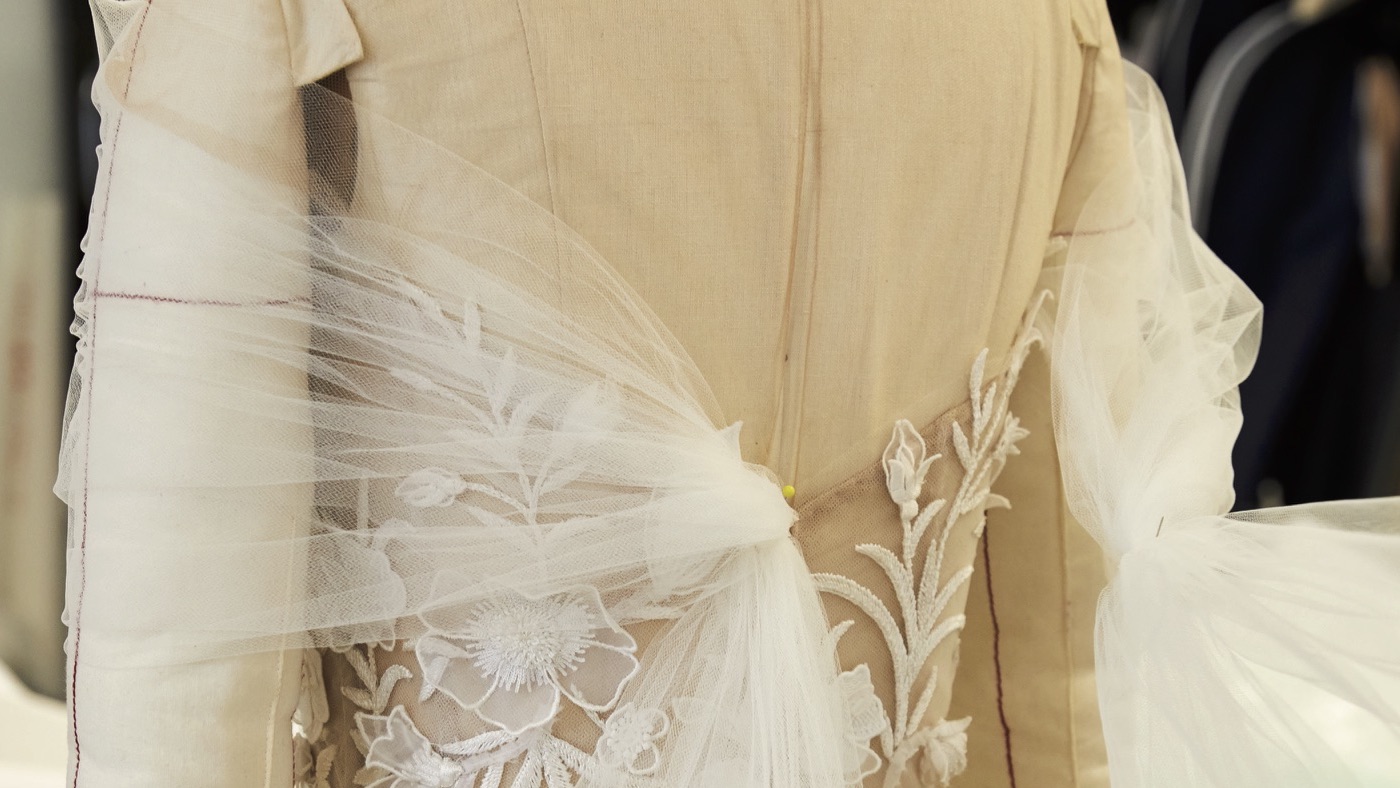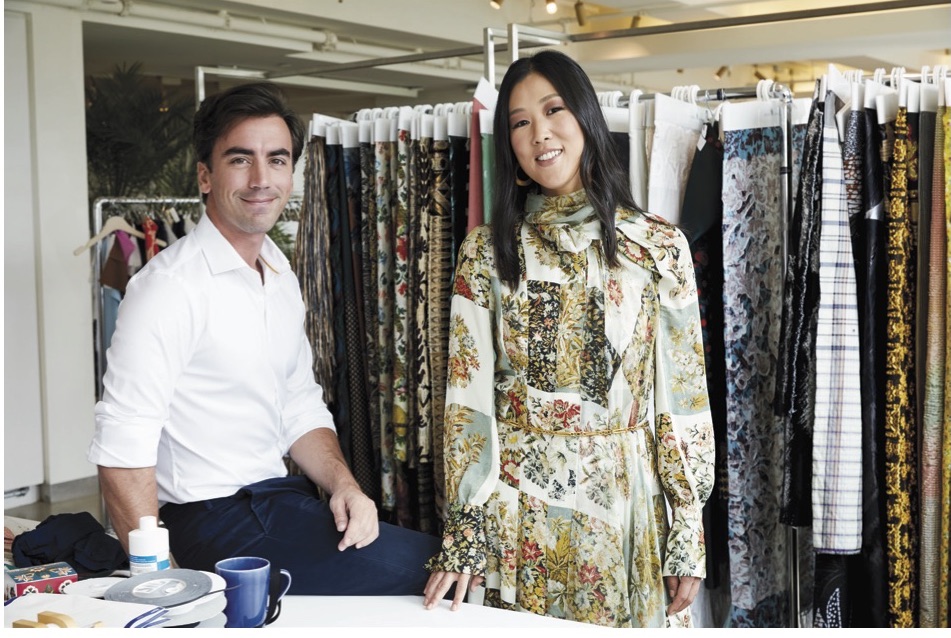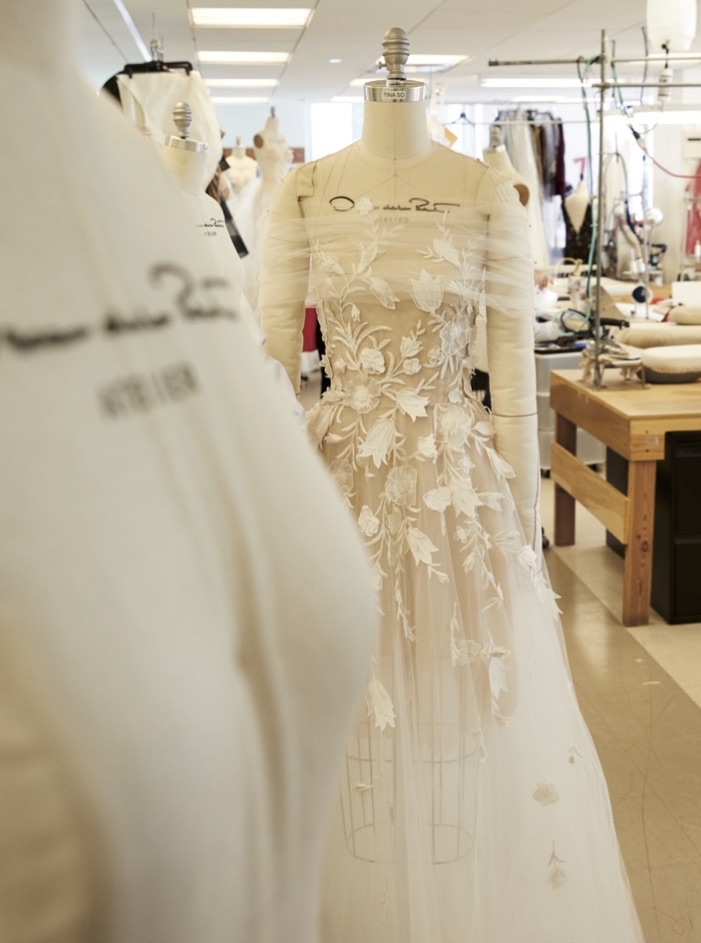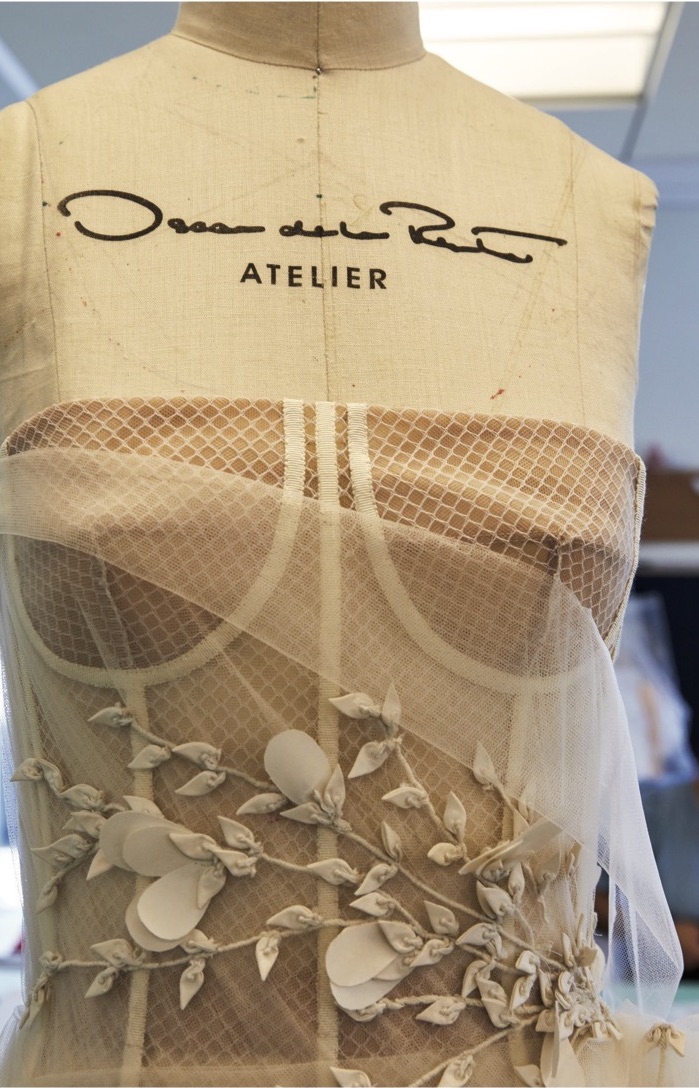Manhattan made: in Oscar de la Renta's studio
How design duo Laura Kim and Fernando Garcia bring contemporary panache to the enduring poetry of Oscar de la Renta

Throughout the year Manhattan is home to 200 species of wild bird. The list of the city’s changing avian population includes large peregrine falcons, several warblers and the diminutive indigo bunting, sought out by birders for its shocking blue plumage. Every year, more than five types of owls wait out winter in Central Park. This past January, a fantastical bird-like creature stalked the Beaux-Arts hallways and grand staircases of the New York Public Library: for the finale of Oscar de la Renta’s Fall/Winter 2020 New York Fashion Week show, model Bella Hadid donned a fuchsia feathered cape, worn hood-up. It was a cinematic moment that, set against one of the city’s best-known landmarks, encapsulated the brand’s Manhattan lineage—when Oscar de la Renta out tted much of the city’s high society—and the contemporary work of its custodians, designers Laura Kim and Fernando Garcia.
Hadid’s plumed cape was designed and finished within walking distance, at Oscar de la Renta’s Midtown ateliers. Our visit to the brand’s nerve center comes several months before the first cases of coronavirus are announced in New York. Here, on the building’s 25th floor, the team is busy perfecting designs on workbenches, dress dummies and clothing rails. This is where Kim and Garcia dreamed up this spring’s Oscar de la Renta gowns—in blush-pink silks, nude lace and raffia—and the new bridal collection, drawing inspiration from recent travels and the brand’s homegrown success. “I would still consider it an American brand,” says Garcia. “We try to make it look as global as possible, because we travel so much and it’s impossible for us to not re ect that, but it’s known for American style.”
Born in Santo Domingo, the capital of the Dominican Republic, Óscar Arístides Renta Fiallo first arrived in New York City in 1963. The Dominican arrived via Madrid, where had he studied art at the San Fernando Royal Academy of Fine Arts before apprenticing with revered couturier Cristóbal Balenciaga and Lanvin’s Parisian haute-couture ateliers, to work with the maison’s then creative director Antonio Castillo. On the advice of fashion editor Diana Vreeland, he relocated to the US to take up a role designing ready-to-wear for Elizabeth Arden; he went on to work with 7th Avenue name Jane Derby. Then, in 1965, the young designer presented his first collection, which was hailed a triumph. A master of color and print, de la Renta married the elevated dressmaking skills he had gleaned in Paris’ ateliers with Southern in uences and all-American wearability.
The Week
Escape your echo chamber. Get the facts behind the news, plus analysis from multiple perspectives.

Sign up for The Week's Free Newsletters
From our morning news briefing to a weekly Good News Newsletter, get the best of The Week delivered directly to your inbox.
From our morning news briefing to a weekly Good News Newsletter, get the best of The Week delivered directly to your inbox.
De la Renta’s rare cocktail of references proved intoxicating to a growing number of influential patrons; the designer’s list of clients included the first ladies of Washington (Jacqueline Kennedy, Nancy Reagan, Hillary Clinton) and Manhattan (Brooke Astor, Nan Kempner, Ann Getty, Marie-Helene de Rothschild). De la Renta’s designs convinced in ballrooms and on red carpets; few were the high-society events without attendees dressed in one of his creations. In 1969, The New York Times reported three guests wearing variations of the same de la Renta gown to the Feather Ball at city hotel The Pierre.
It’s a colorful legacy, but, instead of researching the brand’s past, Kim and Garcia are busy defining its modern voice. The two designers spent a combined 17 years working with Oscar de la Renta before the designer’s death in 2014, and it’s their personal experience of the brand and its founder that shapes their work today. “We never look into the archives,” explains Kim, who first joined in 2003 and eventually became design director. “I think we just go by our gut feeling. We remember how Oscar was.” Garcia, who moved to New York with a degree in architecture from Indiana’s University of Notre Dame, was originally hired as an intern and worked his way up to senior designer. “You have to design in the present,” he says. “We are lucky to have his influence, because it was our first job, right out of school. Our instincts were kind of in tune with his.”

Oscar de la Renta's designing duo Fernando Garcia and Laura Kim
Since their appointment as joint creative directors in 2016, the duo—who also established fashion brand Monse the same year—have collaborated on collections. “We sit together all day, and we even hang out after work,” says Kim. “We are constantly in conversation.” Their deliberations include the sharing of inspirations—Kim prefers to save snaps in Dropbox, while Garcia extols the virtues of classic mood-boards. “I like touching paper,” he says. “I like things to be tangible—it sort of seeps into my brain faster.”
A free daily email with the biggest news stories of the day – and the best features from TheWeek.com
For this summer’s collection, the twosome homed in on the brand’s Latin American roots. “We looked to Oscar’s native Dominican Republic and the Caribbean, the melting pot of cultures juxtaposed with the arresting splendor of natural landscapes.” Kim and Garcia chose to work with fabrics in a color palette they describe as “solar”: bright yellow, burnt orange and bleached whites set against azure blue. Next, they focused on natural materials such as crocheted ra a and hand-loomed linens. Loose daytime tailoring sits with silk shirting and caftans with floating hems; come dusk, Kim and Garcia propose short, diaphanous cocktail dresses or draped, sculpted and ru ed gowns. In the duo’s hands, such grand night-time designs are modern through their ease of wear. “We love the new direction Oscar De La Renta has taken,” says Elizabeth von der Goltz, global buying director at Net-a-Porter. “As they both worked alongside Oscar himself, they truly understand the heritage and design of the house, but have been able to move it into the future.”
Back at their Manhattan studio, Kim and Garcia remember de la Renta’s joie de vivre. “He always said to have fun and enjoy life,” Kim recalls. “When we went on business trips, he’d be upset if we didn’t take a day to look around.” And Garcia echoes her memories: “He would always tell us, ‘I don’t care how talented you are, if I can’t have lunch with you every day, then I don’t want you in my team.’”
Portrait and studio images by Lynda Churilla


-
 Pipe bombs: The end of a conspiracy theory?
Pipe bombs: The end of a conspiracy theory?Feature Despite Bongino and Bondi’s attempt at truth-telling, the MAGAverse is still convinced the Deep State is responsible
-
 The robot revolution
The robot revolutionFeature Advances in tech and AI are producing android machine workers. What will that mean for humans?
-
 Health: Will Kennedy dismantle U.S. immunization policy?
Health: Will Kennedy dismantle U.S. immunization policy?Feature ‘America’s vaccine playbook is being rewritten by people who don’t believe in them’